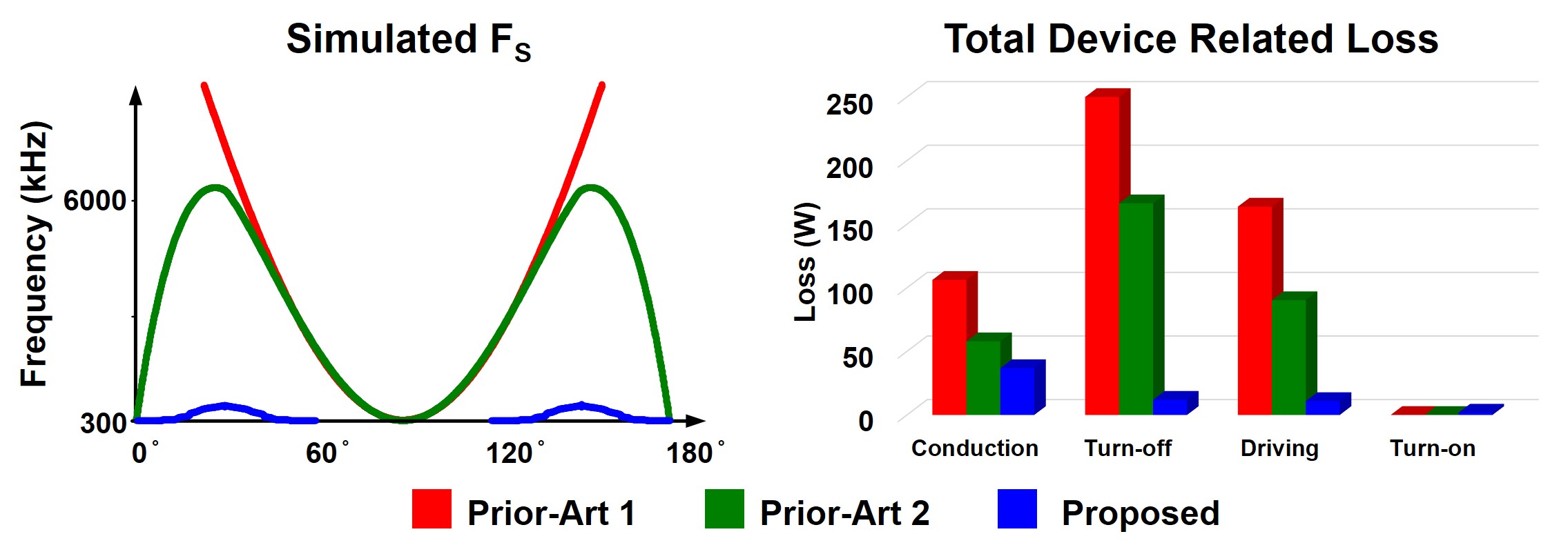RESEARCH
Critical-Mode-Based Soft-Switching Modulation for Three-Phase Inverters

Soft switching is the key factor to achieving high efficiency during high-frequency operation, and CRM operation is the simplest way to achieve soft switching. In prior-arts modulations, split capacitors are used on the dc side, and the middle point is connected to the ac side neutral point to electrically decouple three phases. Therefore, each phase is able to run in CRM inde-pendently. However, an extremely wide switching frequency variation range is observed when applying prior-arts modulations to high-frequency design. With a minimum switching frequency of 300 kHz, the peak switching frequency reaches 6 MHz or above, resulting in large switching-related loss.
Thus, instead a dc-side middle point and ac-side neutral point are left unconnected to avoid wide switching frequency variation. By combining discontinuous pulse width modulation (DPWM) with CRM, and synchronizing switching frequency through discontinuous conduction mode (DCM) operation, the switching frequency variation range becomes much narrower. With a mini-mum switching frequency of 300 kHz, the peak switching frequency is around 500 kHz, which reduces switching-related loss significantly.
Fig. 1 shows the advantages shown by a simulation of the proposed modulation over two prior-arts modulations, in terms of switching frequency variation and device loss breakdown.
Fig. 2 shows the experiment waveforms over the course of a line cycle and at three arbitrarily selected instants during CRM operation. It can be clearly seen that ZVS soft-switching is achieved.























































































